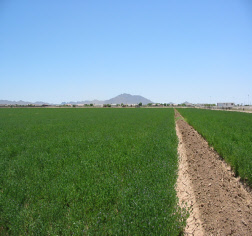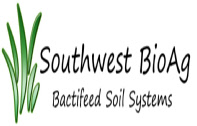



What is Bactifeed?
Healthier soil means healthier crops. Without it, successful farming is virtually impossible.
What does Bactifeed do? It has the ability to :
1. Take in water and oxygen easily
2. Deliver a full range of vital nutrients in a highly available form to the crops it supports.
For both to happen, the presence of a complete and active biological system in the soil is crucial.
Getting to the root of the problem
The Bactifeed Soil System is specifically designed to continually revitalize your soil, improve water penetration and enhance fertilizer availability to growing crops. The process starts by combining a specifically formulated biological packages and nutrient-balanced food supply contained in a Biological-Generating tank. It will constantly inject a source of biological organisms and soil stimulants into your fields. The result is a rapid, ongoing improvement in soil conditions and plant health.
When the organisms needed for healthy, productive soil are missing or inactive, the soil’s ability to take in water is reduced. Nutrients become bound up, unavailable to growing plants. Additionally, many farmers are discovering that as growing seasons go by, fertilizer requirements continually increase. Correspondingly, the overall health of the soil steadily decreases. But, there is a cost-effective, efficient way to reverse the process.
The healthy alternative.
Soil is restored to good health through the delivery of three vital components:
1. A vast amount of bio-stimulants for indigenous organisms already in the soil.
2. Additional strains to supplement existing organisms.
3. An extensive package of highly available minor nutrients to strengthen the entire program.
How the Bactifeed Soil System helps you
- Introduces symbionic and symbiotic organisms to your soil.
- Improves overall soil efficiency and cec improvement.
- Accelerates select biological growth.
- Biologically transforms bound micro and macro nutrients for plant intake.
- Improves soil aggregate for additional water absorbtion, aeration, root development, and plant health.
- Specifically formulated to enhance biological growth of indigenous and supplement organisms, resulting in rapid soil improvement, promoting heathier plants and increased productivity.
Better from the Ground up
We begin with specifically selected bacteria that have been isolated from highly fertile soils and exhibit optimum abilities to produce maximum enzymes. They must also be able to adapt to many different soil conditions and provide unique abilities to fix both atmospheric and synthetic (chemical) nitrogen.
These organisms are then custom fermented (laboratory grown) under aseptic conditions to provide a pure culture. When this culture is combined with other soil amendments and applied to the soil, indigenous bacteria multiply and grow very rapidly. As the biological health of the soil improves, minerals become more available to the plants and uptake is increased by 200-300% and nitrogen utilization by 50-75%. In the cases of nitrogen utilization volitization (gaseous escape) is greatly reduced and the leaching (run of and seepage into the water table) is almost eliminated.
By increasing the biological content of the soils ecosystem, we make the soil healthier. Doing this allows the soil to absorb more water, metabolize fertilizers and elements that have been placed in the fields for decades. Making the soil ecosystem healthy relieves stress on the plants, whatever they are, and allows them to utilize their own immune systems to ward off predatory herbs (weeds) and pests (insects), meaning less herbicides and pesticides required. Fewer toxins in the soil means fewer toxins reaching our water resources. Digesting and metabolizing fertilizers in the field keeps them out of our water resources and delivers them where they belong, to the plant.
Organically sufficient soil compacts in the hand, has a texture that can be molded in the grip, and contains moisture. Organically insufficient soil is hard, crusty, and resembles more of a rock and clod that a moldable, malleable substance. Even under desert conditions, organically sufficient soil keeps this structure. It actually contains numerous systems that makes up a ecosystem within the top soil. For more information, examine our slide presentation.
Whether that soil resides on your farm, your golf course, your home, or your garden, increasing the microbial activity in can help improve the quality of your soil and the quality and quantity of your crop, while reducing inputs such as water and fertilizer.
Bacteria in the Soil
The cycles that permit nutrients to flow from soil to plant are interdependent and proceed only with help of the soil community. Soil microorganisms are the key link between mineral resources and plant growth. Soils contain five major groups of microorganisms:
Farmers have been incorporating biological practices into farming for years. Most common is the application of manure.
At the request of several of our farmers we took on the challenge of combining what we had learned over the last 15 years and developed a system that would produce faster results, address most soil problems and was easy to apply. The result is the BACTIFEED ST Soil System. A program that produces hundreds of gallons of biological and nutrient rich liquid every week that will go out with every irrigation.
A Golf Course in Tucson, AZ used 13.2 million gallons LESS water than it had this time last year. That is a savings of approximately $31,000 in the first 5 months of the year using BACTIFEED.
“The Future of Farming”
Popular Science Magazine
Fertilizer use has exponentially increased crop yields in the past 30 years. That fertilizer provides extra nitrogen, phosphorus and potassium, which are essential for plants to build amino acids and cell walls. Soon, farmers may be able to get all the benefits of man-made fertilizer for hundreds of dollars less by using microbes instead. C.A. Reddy, a professor of microbiology and molecular genetics at Michigan State University, examined 300 naturally occurring soil microbes and assembled a cocktail that can simultaneously reduce the need for phosphorus and nitrogen fertilizers, protect plants against pathogens, and boost yields in virtually every type of crop.
In his experiments, field-grown tomato plants, fed with his microbes, produced nearly 90 percent more fruit, and greenhouse tomato yields were often even greater compared with using traditional fertilizer. He’s also tried them on plants ranging from eggplant to switchgrass. Sold as a liquid soil additive called Bio-Soil Enhancers, Reddy’s microbes are self-sustaining, unlike traditional fertilizer which needs to be replenished every year. He’s doing extensive field trials now.

Products Uses
r


GOCA-certified for Organic Farming
If you are an organic farmer, or a farmer who sells commercially licensed organic produce, you understand how important certification of your inputs is to your business. Bactifeed has been certified for use by organic farmers by the Guaranteed Organic Certification Agency www.goca.ws to be in full compliance with USDA standards regulating organic farm production.
Contact us for information on Certification for your Organic Farm.

5 year old Alfalfa field after 2 applications of Bactifeed.
“Water is soaking in, Yield is up, Field is in better shape than it has been in years.”
BACTIFEED 2010 © Southwest BioAg 2010 480-772-2425